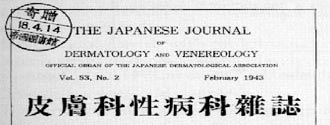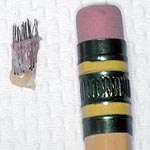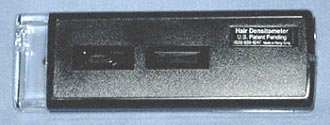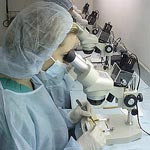Hair Loss Treatment
The Dermatologist, Dr. Norman Orentreich, introduced hair transplantation in the United States in the late 1950's. Although the basic concept behind hair transplantation is rather simple, self-proclaimed "experts" have shrouded the field in mystery and these myths have been perpetuated over the years.
The hair growing on the sides and lower part of the back of the head is permanent hair in most people. It persists even in the face of the most extreme degree of Male Pattern Baldness. This permanent hair can be redistributed to cover the areas of the head where the hair has thinned or that have become bald. All hair restoration procedures work through the redistribution of this permanent hair.
To learn more about the basics of hair transplantation, including what you should know before, during, and after any procedure, please view the following topics:
An Overview of Hair Transplantation
A Very Brief History of Hair Transplantation
The modern technique of hair transplantation was first described by a Japanese dermatologist named Okuda in 1939. Dr. Okuda, working on severely burned patients, transplanted round grafts of skin containing hair follicles from the permanent hair-bearing areas into slightly smaller round openings in scarred areas of scalp. The grafts continued to produce hair in their new location. Dr. Okuda's findings were published in a Japanese medical journal, but he died in World War II and his discovery was lost. Dr. Okuda limited his treatment to burn victims; he may not have realized the possibilities of using this technique to treat baldness.
Another Japanese dermatologist, Tamura, used very small 1- to 2-hair grafts to restore hair in the female pubic region. His techniques were, in many ways, similar to the techniques used today. Unfortunately, because of W.W.II, the articles describing their techniques were not known to the Western World unit many years after Dr. Orentreich had founded the field of Hair Transplantation in the United States.


Japanese Journal of Dermatology
from Stough: Hair Replacement |
The principles and techniques of modern hair transplantation were rediscovered by Dr. Norman Orentreich in New York City in the early 1950's. He published his work in 1959 in the Annals of the New York Academy of Science. Interestingly, his original paper was rejected three times by other medical journals as the reviewing physicians did not believe that the procedure could work. Unlike those performing hair transplantation before him, Dr. Orentreich was the first to use this technique to treat male patterned baldness.
Dr. Oreintreich's discovery was that hair maintained the characteristics of the area it came from rather than the area to where it was transplanted. This means that hair that was transplanted from the permanent zone in the back of the scalp into the balding area in the front of the scalp would continue to grow as if it had remained in the permanent zone. He coined the term "Donor Dominance" to explain this basic principle of hair transplantation, that grafts continue to show the characteristics of the donor site at their new location. This principle of donor dominance is due to the fact that the pathogenesis of hair loss is inherent to each individual hair follicle. This is the basic principle behind all hair transplantation.


Standard graft compared to pencil eraser. |
|
After experimenting with a number of different size grafts, Dr. Orentreich chose to use 4mm punches (which are about the size of pencil erasers) as his "workhorse". He chose this size because larger sizes often didn't grow hair in the center (from oxygen not reaching the core of the graft) and smaller grafts didn't seem to contain enough hair. At the time, only 20-30 grafts were transplanted in any one session.
Over the next twenty years, the punch grafts became smaller and the numbers used per session slightly larger. The smaller punches look better than the larger ones, but the problem was that the small punches caused a lot of damage to the hair as they were harvested from the donor area, and the smaller the punch the greater the problem.
The problem was partially solved by removing the donor tissue in thin strips using a multi-bladed knife, but this had its own problems with cutting hair follicles (transection) and causing damage. The era of mini-micrografting of the late 80's and early 90's evolved from this multiple-strip method where the thin strips were subsequently cut into different size grafts based upon the approximate number of hairs the doctors wanted them to contain. A more accurate term for the procedure is mini-micrografts "cut to size", since the doctor cut the grafts to the size he wanted rather than with respect to the way they grew.
Hair Transplantation Today
In 1993, Rassman introduced the Densitometer, an instrument that could directly measure hair density. He stressed the importance of accurately quantifying donor density and assessing hair supply in the surgical planning. Densitometry made hair transplantation truly "scientific".


Densitometer |
In 1994, Limmer published a paper describing a technique he had been using since the late 1980's, in which he harvested the donor area in a single ellipse (long oval) and used a microscope to generate small micrografts while avoiding transection of hair follicles. At the International Hair Restoration meeting that year in Toronto, Dr. Rassman presented 22 live patents that popularized the Megasession (a technique using large numbers of small grafts) that was first described by Uebel in Brazil.
In the 1995 publication "Follicular Transplantation", Bernstein and Rassman proposed that the ideal hair restoration surgery should consist of performing the entire transplant with naturally occurring individual follicular units and that these units should be used in large numbers. They detailed the advantages of this procedure and introduced the term "follicular unit" to modern hair transplantation. In 1998, the name of the procedure was changed to Follicular Unit Transplantation.


NHI Staff dissecting follicular units under the stereo-microscope. |
|
Today, the majority of physicians use mini-micrografting techniques which, compared to Follicular Unit Transplantation, are faster and easier to perform. Those physicians who practice Follicular Unit Transplantation feel that this procedure offers the patient so many advantages in naturalness, undectability, and preservation of donor supply, that it is well worth the additional effort. The majority of this Web Site is devoted to understanding Follicular Unit Transplantation.
Besides Mini-micrografting and Follicular Unit Transplantation, some doctors still use small punches or slivers of tissue placed into long slits (slit grafting). The use of scalp reductions, scalp lifts and flaps, as well as laser hair transplantation, has fallen from popularity in recent years (with good reason), but patients can still find doctors using all of these techniques.
The newest method, NHI's FOX procedure (Follicular Unit Extraction) enables the surgeon to literally extract individual follicular units, one by one, from the donor area without a linear incision.
These different procedures are described on this web site and can be found by clicking on Follicular Unit Transplantation, Follicular Unit Extraction, and Drugs & Other Treatments. Additional information on these subjects can also be found in Chapter 8 of The Patient's Guide to Hair Restoration.